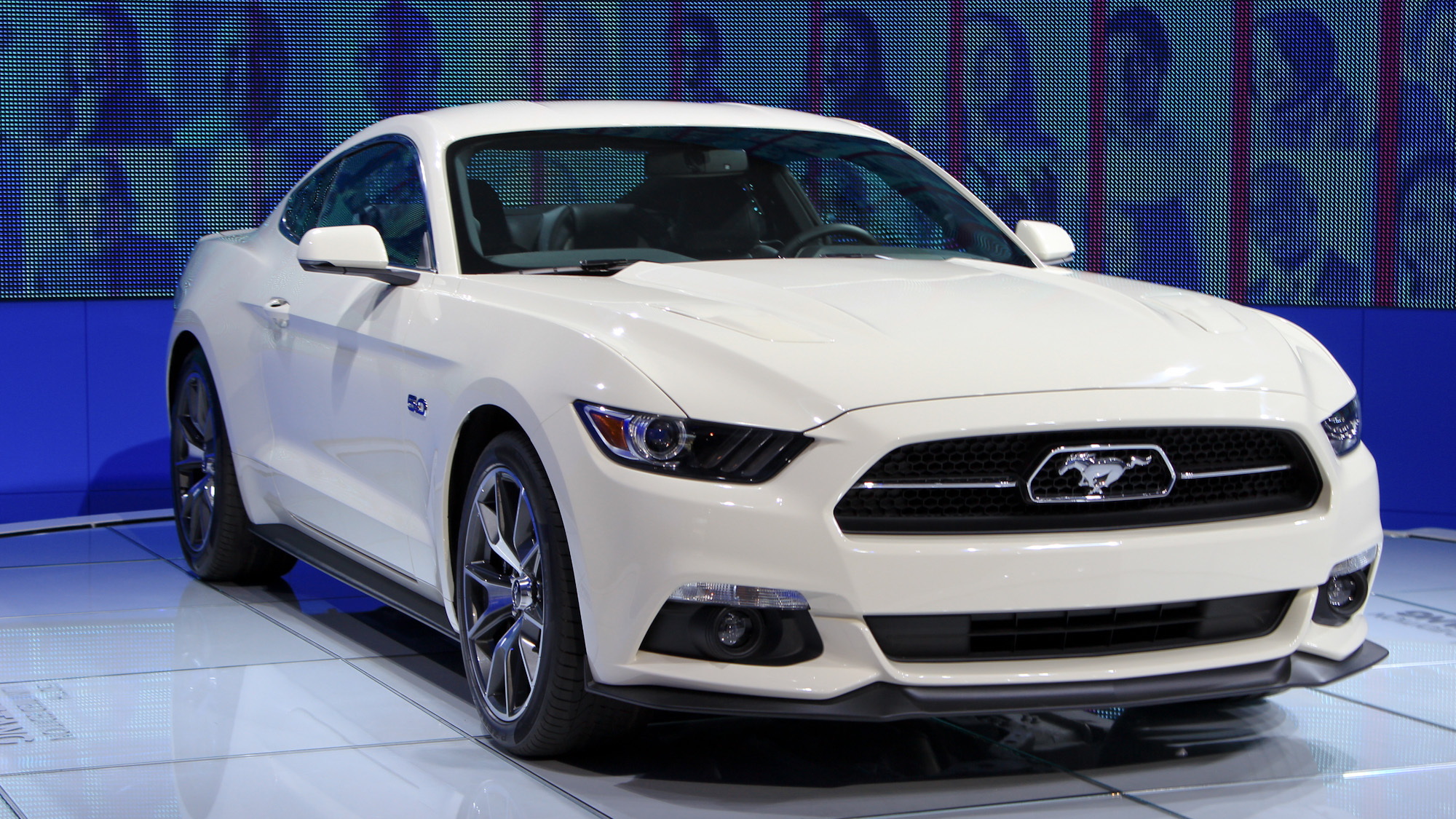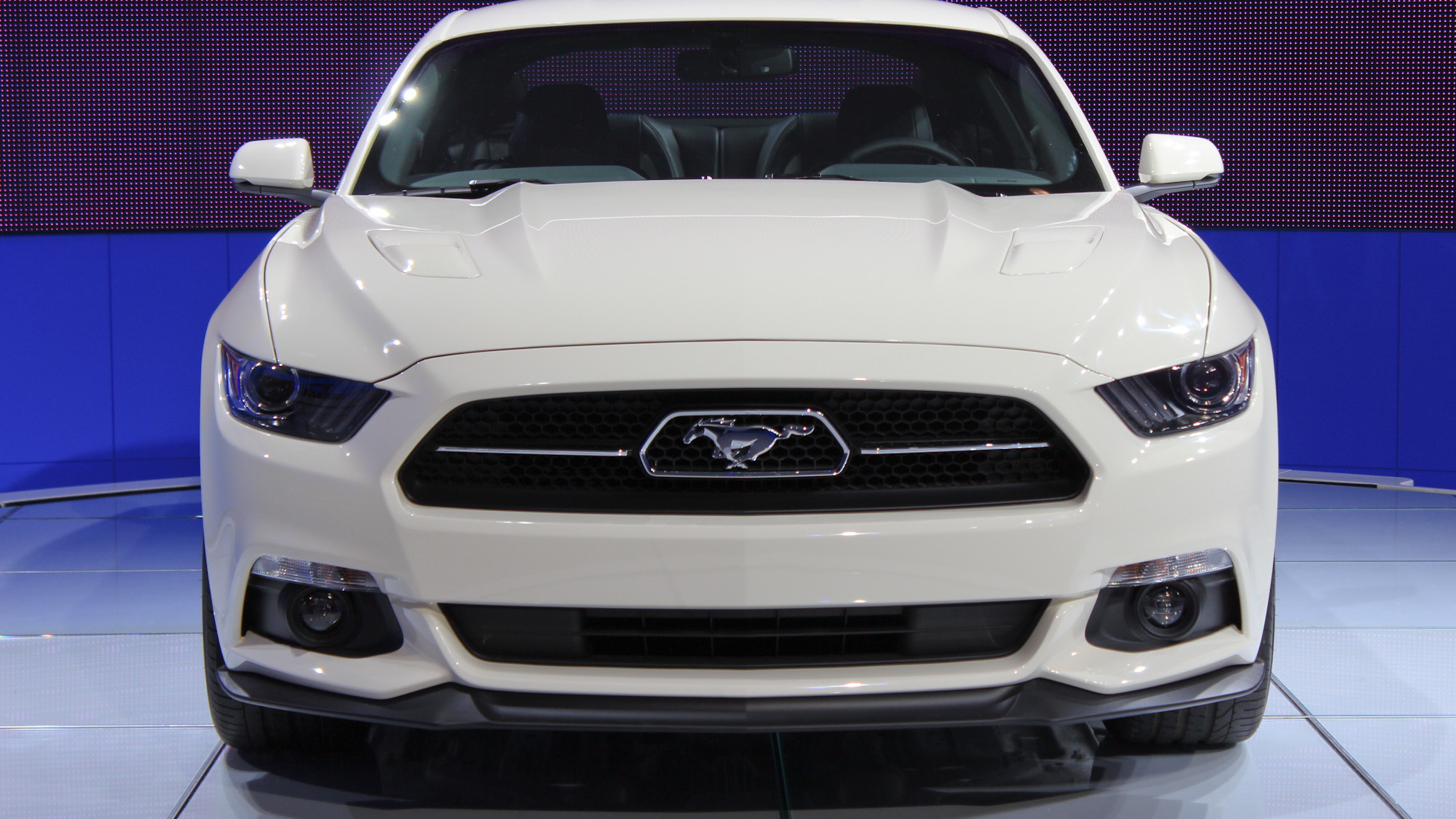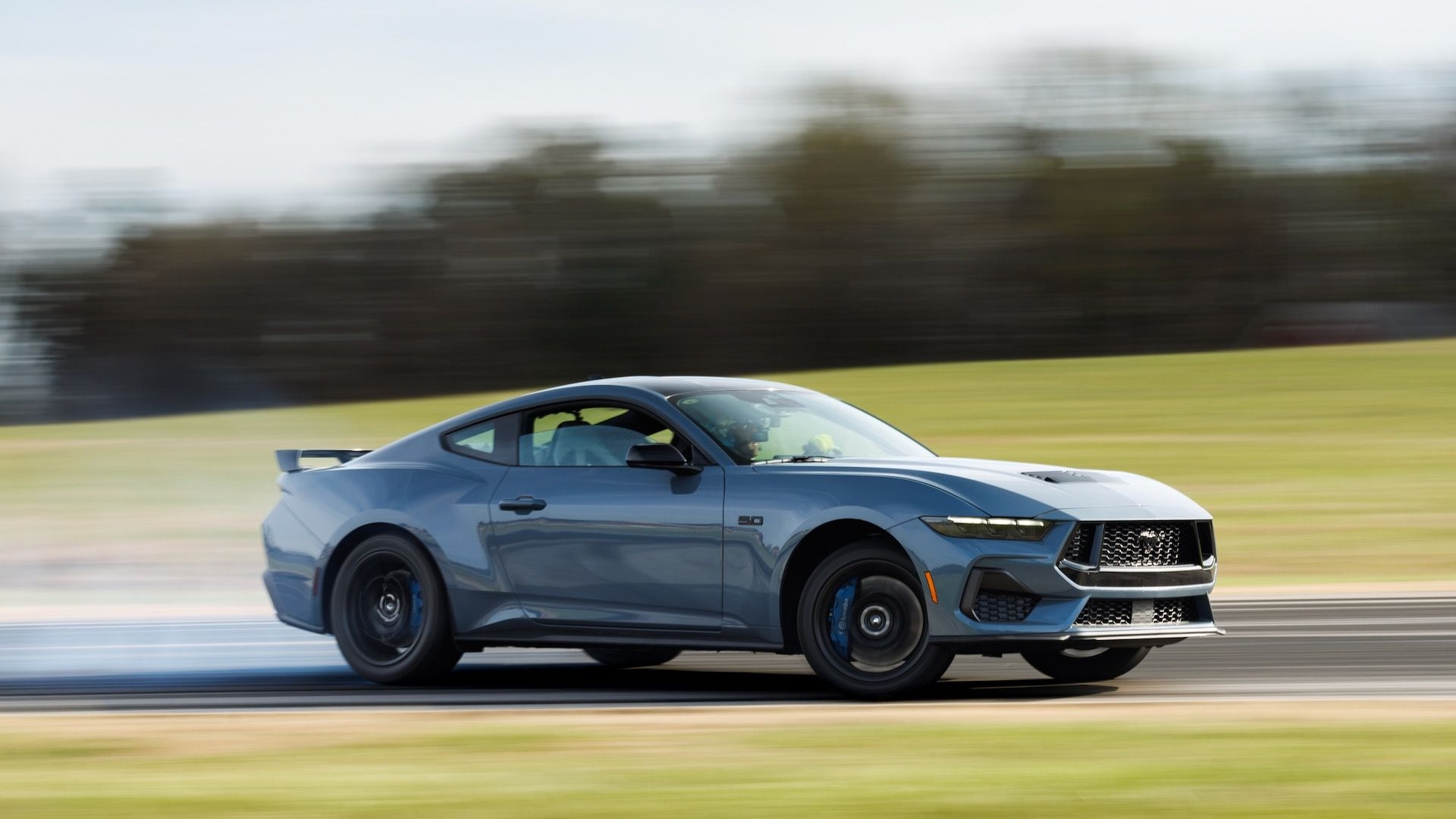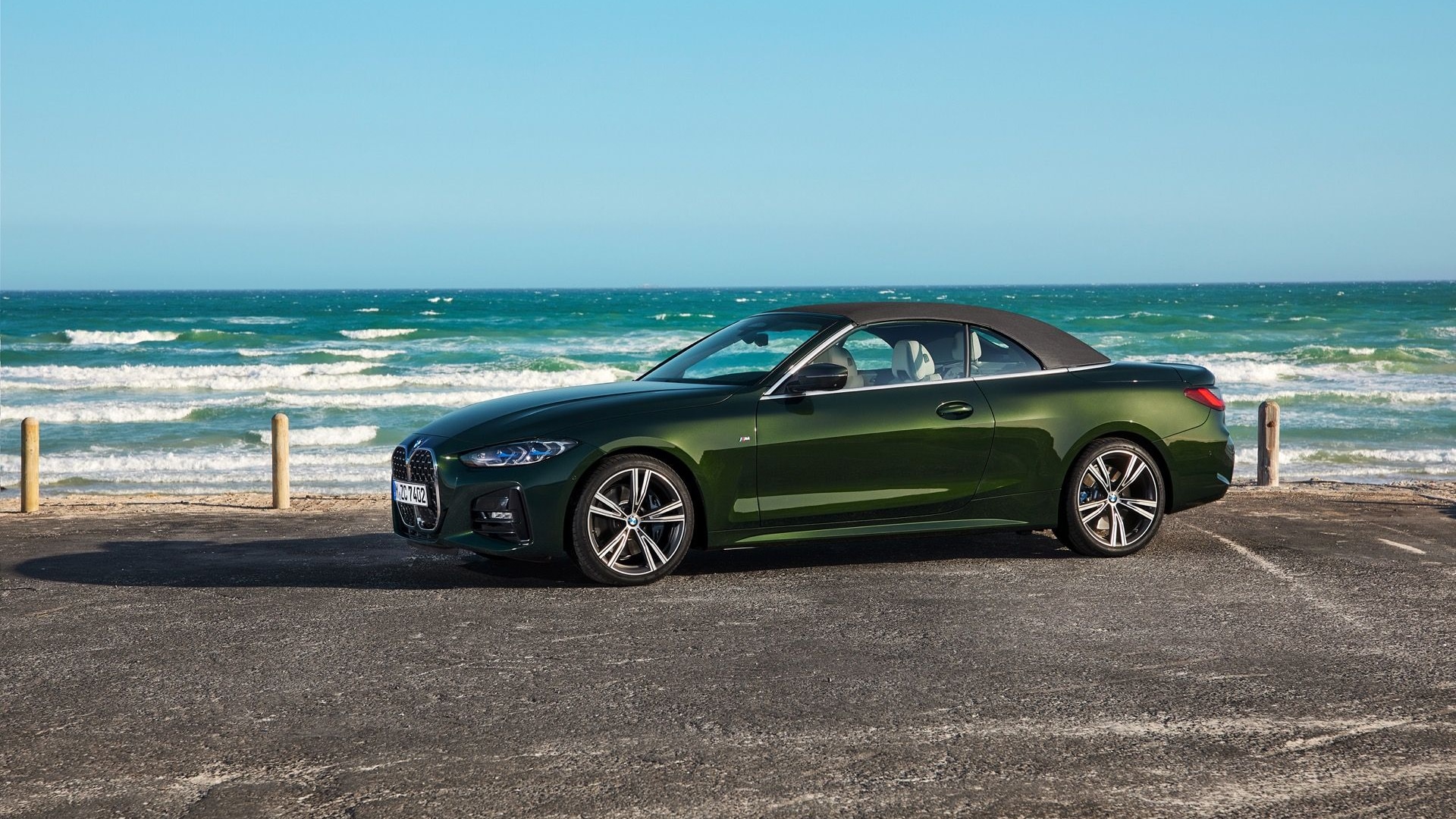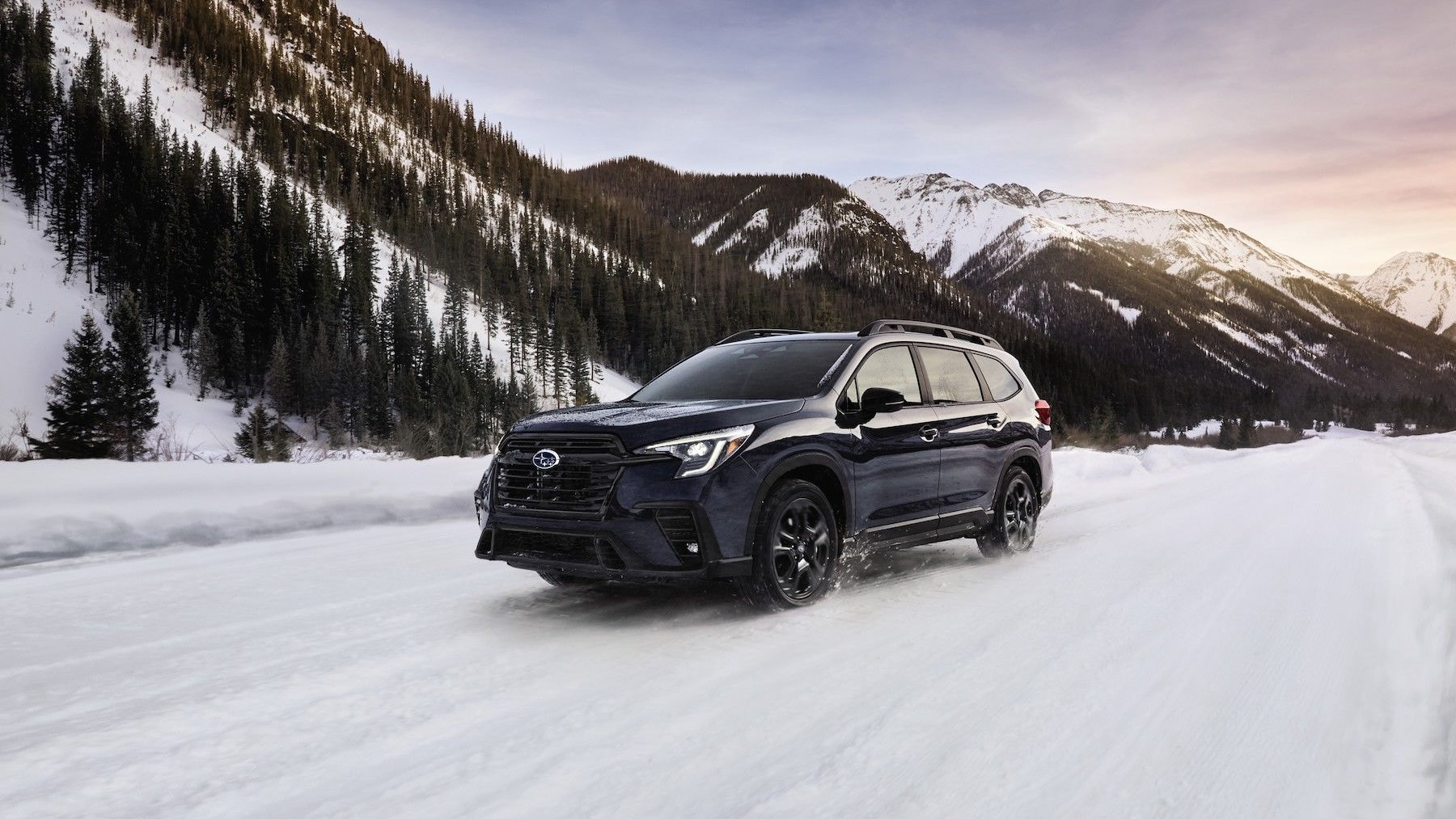Now, the company has revealed power and weight info on the coupe, at least, in V-6, EcoBoost, and GT trims.
Horsepower:
- Mustang Ecoboost: 310 hp, 320 lb-ft
- Mustang V-6: 300 hp, 280 lb-ft
- Mustang GT: 435 hp, 400 lb ft
Weight:
- Mustang EcoBoost: 3,532 lbs (manual), 3,524 lbs (automatic)
- Mustang V-6: 3,526 lbs (manual), 3,530 lbs (automatic)
- Mustang GT: 3,705 lbs (manual), 3,729 lbs (automatic)
So how do those numbers stack up to the previous-generation Mustang? The V-6 gains 30 pounds in manual trim, and 12 pounds with the automatic, while losing 5 horsepower and staying flat on torque. The Mustang GT gains 15 hp and 10 lb-ft, while gaining 87 lbs in manual trim and 54 lbs as an automatic.
The EcoBoost, being all-new, doesn’t have a point of comparison to the last-gen car, but it checks in at 6 lbs more than a 2014 base V-6 automatic, and 36 lbs more than a base V-6 manual.
In addition to the weight and power figures, Ford also revealed some new equipment for the Mustang, including a trio of brake systems, performance packs for the EcoBoost and GT Mustangs, and stats on weight distribution.
The Mustang EcoBoost lays claim to the best-ever weight distribution for a Mustang, at 52 percent on the front axle and 48 percent on the rear. The Mustang GT bears 53 percent over the front axle.
As for the brake kits, the base V-6 and standard Mustang EcoBoost kit is a two-piston front setup on 320-mm rotors, with a single-piston rear caliper clamping 320-mm rotors. The EcoBoost performance pack upgrade and standard Mustang GT brakes are four-piston front calipers on 352-mm rotors, with single-piston calipers on 330-mm rotors in the rear. The Mustang GT’s performance pack upgrade adds six-piston Brembo front calipers on 380-mm rotors and single-piston rear calipers with 330-mm rotors.
Ford notes that the standard brake package on the Mustang GT is equivalent to the 2014 Mustang GT’s Track Package setup—and that’s the same package as you’ll get with the 2015 Mustang EcoBoost performance pack.
Other performance pack upgrades shared across the EcoBoost and Mustang GT lines include:
- Upgraded springs, bushings, and monotube rear dampers
- Increased cooling capability for track use
- Thicker rear anti-roll bar
- Strut tower bracing
- Upgraded ABS, stability control, and power steering tuning
- A center gauge pack
Upgrades specific to the Mustang EcoBoost performance pack, in addition to the brake system mentioned above:
- 19x9-inch Ebony Black alloy wheels with Pirelli 255/40 tires at each corner
- 3.55:1 final drive ratio
The 2015 Mustang GT performance pack also gets:
- 19x9-inch Ebony Black alloy wheels with 255/40 Pirellis up front and 275/40 Pirellis out back
- 3.73:1 final drive ratio
- Unique front splitter with enhanced front brake cooling airflow
So, in a nutshell, we now know what the new Mustang is bringing to the table. Ultimately, however, these specs only give the bare outlines of the car’s character. For the final answer on just how good the Mustang is—or isn’t—we’ll have to get behind the wheel and put it to the test.



